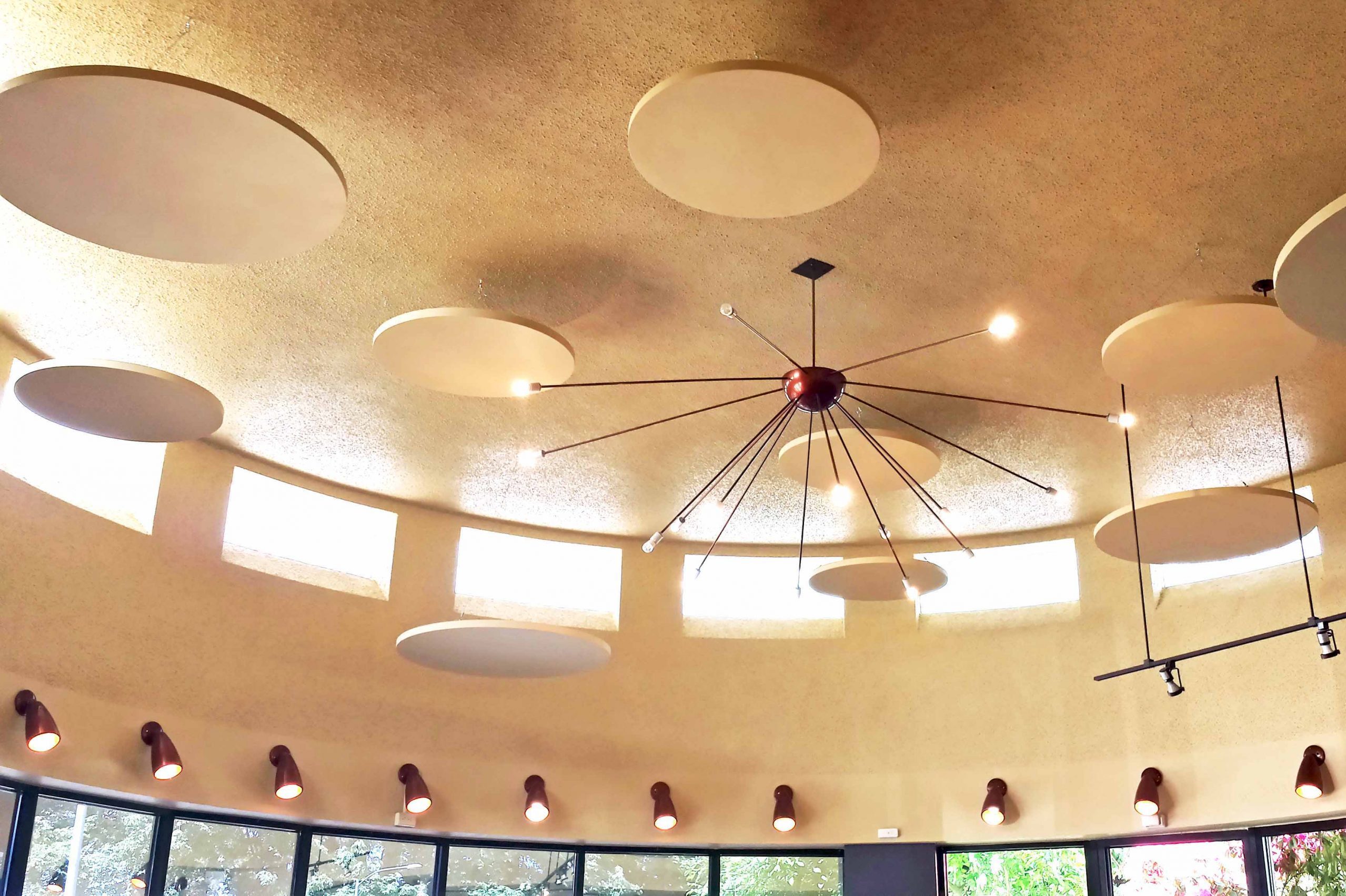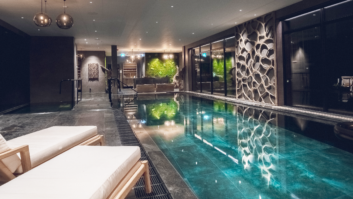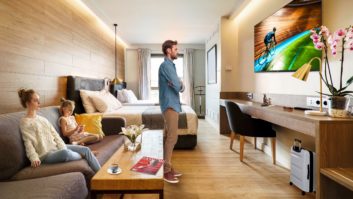
Previously we considered the unique challenges that restaurants present when trying to create an ideal acoustic environment. Here Steve Montgomery looks at audio system design considerations.
Whilst the most effective solutions need to be considered and applied at the design and construction stages, there are steps that can be taken in existing buildings. Richard Vivian, MD of Big Sky Acoustics, comments: “Everything has acoustic properties, so things can be added to help control noise; they don’t need to be specific acoustic items. Wooden slats, textured finishes and hangings on the walls help. Artwork can be produced on acoustic materials with frames around to help absorb the sound.”
James Wright, western territory manager for Primacoustic, sees some advantage in retrofit: “We know how the room is performing but this is weighed against the disadvantage of working around existing infrastructure. It is important that the restaurateur has a vision of what they want the room to sound like and what their customers expect. The acoustics can be tailored to meet those expectations. There will always be a balance between acoustic and aesthetic requirements and this is an important conversation to have in the early planning stages. Sound-absorbing ceiling panels easily blend in and are highly effective in damping ambient noise to a level that is right for diners.”
Adding music
Once an ideal acoustic environment has been created to remove unwanted noise, restaurateurs will then generally want to add background music to create the atmosphere they desire. The design and positioning of audio systems is crucial in achieving the desired outcome. The objective is to achieve consistent sound coverage, with no particularly bad areas with too much or too little sound. Different areas within the restaurant may also require different sound levels.
Gabriel Alonso Calvillo, product manager for integrated systems at Adam Hall, explains the approach that installers should take: “First of all, you need to know the right requirements from the owner of the restaurant: which areas should be provided with sound, how many independent zones they need, the requirement for independent volume and source control. Then, you need to know the level and coverage requirements for each zone. With this information, and the architectural plans, you can create with the right coverage/dispersion patterns.
“Directivity control helps to manage the audio coverage better. Additional sound transducers can be hidden in walls or installed on surfaces to transform them into sound sources and provide a better experience for customers. A DSP audio system can be useful in configuring the system depending on the time of the day and level of background noise. Features like automatic gain control, parametric EQs, dynamic compression/limiting, as well as time schedulers and presets, help installers to configure systems and owners manage them to suit changing conditions.”
It is important that the restaurateur has a vision of what they want the room to sound like
James Wright, Primacoustic
Line array elements are extremely useful in providing directional sound coverage, as Daniele Mochi, project manager, K-array, explains: “A point source located close to a table would disrupt the experience for the people sitting at that particular table but would be almost inaudible for people sitting further away. The same instance happens when big subwoofers are located close to the seats, resulting in strong and unwanted vibrations. When we approach the design of a sound system for a restaurant, we take a wide range of points into consideration. Most proposals are usually centred on our line-array elements supported by distributed subwoofers installed in the ceiling to create uniform sound throughout the room.”
More advanced acoustic devices are also useful in tailoring specific environments after construction and fit-out. Steve Ellison, applications director at Meyer Sound, comments: “Physical acoustic treatment requires a compromise between intelligibility, noise level, and vibe. Once the treatment is in place, it can’t be adjusted. To provide the optimal experience for all occupancy levels, we have developed the Constellation active acoustic system, which dynamically changes the room’s acoustic characteristic. This technology had its start in concert halls and theatres but is proven to be effective in restaurants.
“When sparsely occupied, the system automatically adds more sound energy to the room using a series of microphones installed in the ceiling over the restaurant that pick up acoustic energy from all around the room. This is processed by the system and then acoustic signals are added to the room using small loudspeakers installed overhead and, in some cases, on side walls. When fully occupied it adds a low level of reverberation to give the room an active feel, but at a much lower sound level than if the restaurant was untreated. This can help blur conversations in the background, allowing diners to focus on their conversations.”
Not only does careful sound control provide a better atmosphere and experience for diners, with an associated uptake in revenues for owners, there are additional advantages as Bob Klein, owner and founder of Oliveto Restaurant & Café discovered. It is not just the customers who feel comfortable; the waiting staff at his restaurant found that they have experienced less back pain from not having to lean in to hear customers at the tables.
www.adamhall.com
www.bigskyacoustics.co.uk
www.k-array.com
www.meyersound.com
www.primacoustic.com







